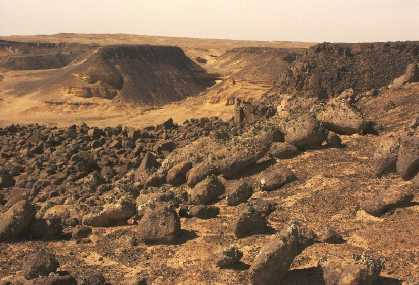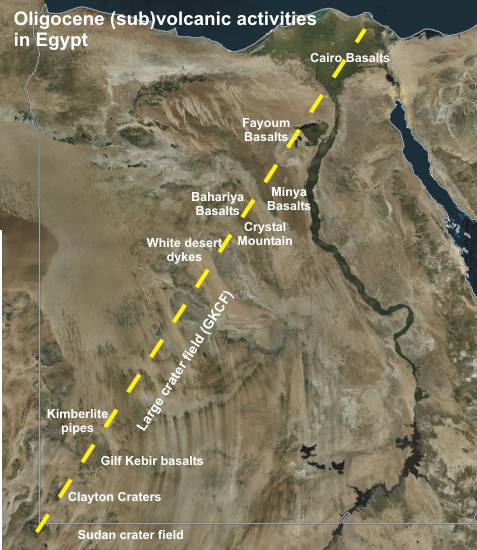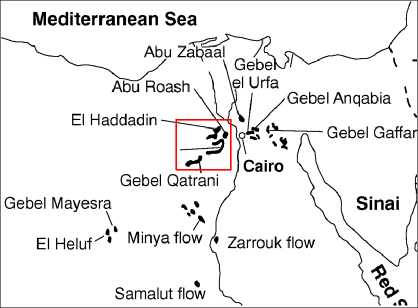The Widan el Faras
basalts (nearby of the Fayoun oasis) are to be found between the Oligocene
Qatari Formation (below) and the Miocene Khashab Formation (above).
The thickness of the basalts was measured between 20 and 35 m. The type
locality of the Widan el Faras basalts is located at the Widan el Faras
hills (upper area of the Gebel Qatrani). Petrographical and chemical
investigations prove, that the basaltic flood originate from a tholeiitic
magma (saturated with silica). This magma is climbed-up along a fissure
during the Oligocene age. The basalt has a consequence of three different
floods. The both first floods are lenses - like. The third flood is
massive and freshly preserved. It forms an edge at the uppermost area
of the Qatrani steep slope.
Further areas of flood basalts in north- and middle-Egypt are distributed.
They are concentrated in the region of Cairo, are found however also
in the Bahariya
depression and western to southwestern of it. |
|

Widan el Faras
|

basalt
|
|

Geomorhological structure
The Widan
el Faras basalt quarries, 20 km southwest of Umm es Sawan, are considered
the source of stone used on the mortuary temple floors and walls of
4 th and 5 th Dynasty ( 2575 � 2323 BC) pyramid complexes.
|

Stratigraphical positions
|
|

Fayoum flood basalt area from
space
|
|
|

|

|
|

Down slidden basalt blocks
|

dito
|
|
|
|

|

Map of all basalt floods in the
northern part of Egypt
|
Remarkable is
the age of all basalt flows. The dates fluctuate between
32 and 23.5 Ma in the Oligocene age. It agrees with the dating of other
subvolcanic and orthomagmatic-hydrovolcanic structures in the Gilf Kebir,
in the White and
Black Desert
as well as the Libyan Desert
Glass location. All structures are placed on a line, which proceeds
from southwest to northeast. Can we suppose here a connection to the
Trans African Lineament ? |